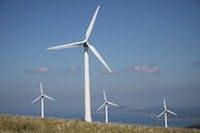The U.S. Environmental Protection Agency (EPA) updated its RE-Powering Mapping and Screening Tool, which will now provide preliminary screening results for renewable energy potential at 66,000, up from 24,000, contaminated lands, landfills and mine sites across the country. The RE-Powering America’s Land Initiative, started by EPA in 2008, encourages development of renewable energy on potentially contaminated land, landfills and mine sites when it is aligned with the community’s vision for the site.
“We see responsible renewable energy development on contaminated lands and landfills as a win-win-win for the nation, local communities and the environment,” said Mathy Stanislaus, assistant administrator for the Office of Solid Waste and Emergency Response. “In President Obama’s Climate Action Plan, the administration set a goal to double renewable electricity generation by 2020. By identifying the renewable energy potential of contaminated sites across the country, these screening results are a good step toward meeting national renewable energy goals in order to address climate change, while also cleaning up and revitalizing contaminated lands in our communities.”
Pulling from EPA databases of potentially and formerly contaminated lands, as well as partnering with state agencies from California, Hawaii, Oregon, Pennsylvania, New Jersey, New York, West Virginia and Virginia, the RE-Powering Initiative expanded the universe of sites from 24,000 to more than 66,000 sites. Working in collaboration with the U.S. Department of Energy’s National Renewable Energy Laboratory (NREL), RE-Powering developed screening criteria for solar, wind, biomass, and geothermal potential at various levels of development. The sites are tracked by EPA and selected state agencies.
The updated screening provides insight into the significant potential for renewable energy generation on contaminated lands and landfills nationwide. For solar energy alone, EPA identified more than 10,000 contaminated sites with the potential to install a 300-kW solar array or greater. Based on mapped acreage, these sites could cumulatively host solar energy systems that capture greater than 30 times more solar energy than all renewable energy systems operating in the United States today.
The RE-Powering Initiative supports the transformation of liabilities into assets for surrounding communities. Since RE-Powering’s inception, more than 70 renewable energy projects have been installed on contaminated lands or landfills. These early projects represent just over 200 MW of installed capacity, which could power approximately 30,000 homes, and provide a foundation for future development as demonstrations of the latest technologies in both renewable energy and remediation design.
In 2013, RE-Powering America’s Land Initiative was recognized as one of the Top 25 Innovations in American Government by Harvard University. This award program is one of the nation’s most prestigious and highlights exemplary models of government innovation and efforts to address the nation’s most pressing public concerns.
Source: EPA


